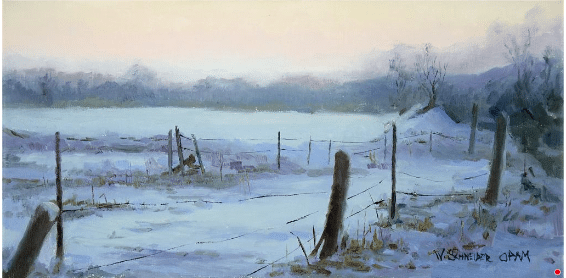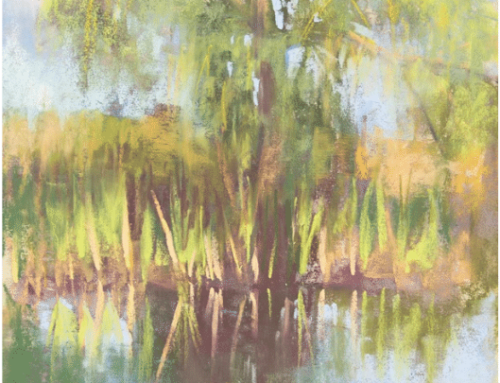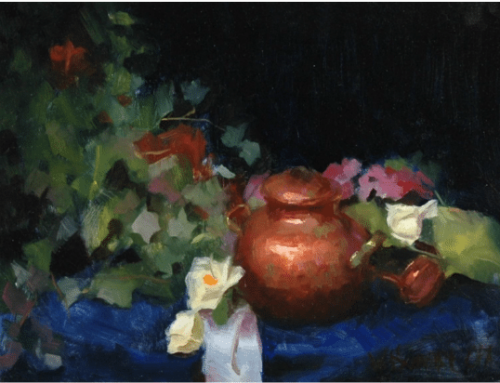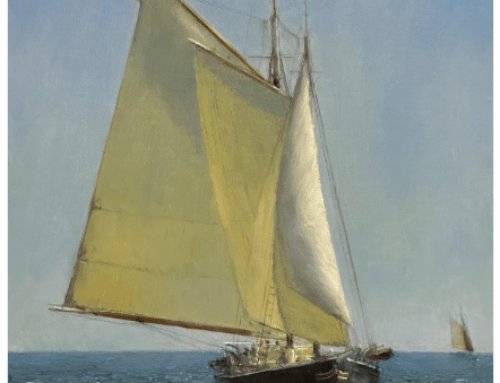Recent psychological studies about creativity identify mindset as a helpful way of understanding why some artists have long, fruitful careers and others give up.
A poll of 140 creativity researchers identified the most important ingredients in creative achievement as perseverance and resilience. Perseverance is staying power, while resilience is something you can develop, like a muscle.
These two qualities, perseverance and resilience, can be thought of as twin aspects of a growth mindset. A growth mindset, as conceived by Stanford psychologist Carol Dweck and colleagues, is the belief that one’s capacities and talents can be improved over time.
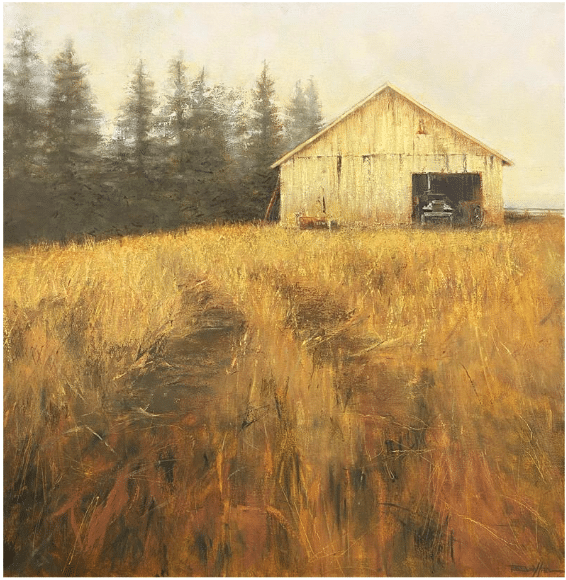
Brenda Boylan, Tucked Away, oil on canvas, 36” x 36”
This may just sound like good old “practice,” but it’s more. If you can picture your mind like a train and your thought patterns like a track, it’s like the difference between how often you run the train vs. putting it on a whole new track.
“When you enter a mindset, you enter a new world,” Dweck has said. “In one world—the world of fixed traits—success is about proving you’re smart or talented. Validating yourself. In the other—the world of changing qualities—it’s about stretching yourself to learn something new. Developing yourself.”
Is it possible to completely reframe why and how you make art? To step right out of old beliefs and limiting patterns that drag you down? Case studies suggest yes, it is. Though naturally it’s going to come down to the individual, it helps to have some tools to change from a “fixed” mindset to a growth mindset. Hence our twins, resilience and perseverance.
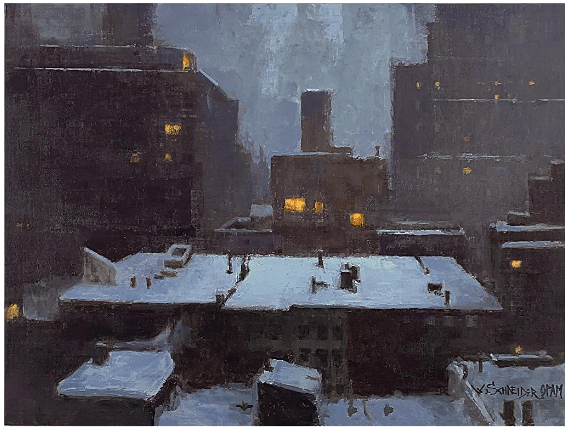
William Schneider, December 30th, Oil on linen on panel, 18” x 24”
Resilience
“Resilience is the psychological quality that allows some people to be knocked down by the adversities of life and come back at least as strong as before,” says Psychology Today. “Rather than letting difficulties, traumatic events, or failure overcome them and drain their resolve, highly resilient people find a way to change course, emotionally heal, and continue moving toward their goals.” But how do they do this? And can anyone learn to do it too?
Failures are inevitable. Researchers advise analyzing and accepting a setback to learn what went wrong and what you can do about it. Didn’t win the art competition? Write to the judge and ask what they look for when judging such things. Didn’t hear back from that gallery? They’re probably just inundated by emails – just assume everyone’s busy, and move on, find a new one to pester.
Accepting failure helps build what psychologists call emotional regulation, the ability to resist being controlled by your feelings. It’s what makes it possible to build the ability to bounce back and take things in stride. Easily said! And yet …
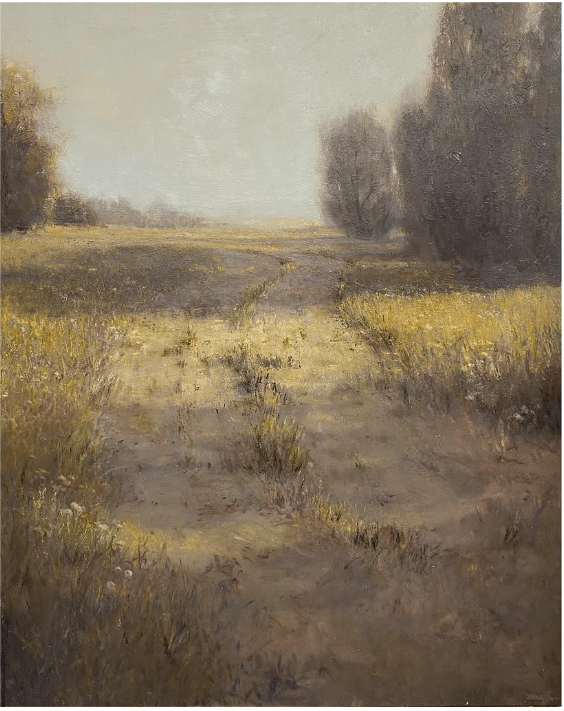
Brenda Boylan, A Different Direction, oil, 60″ x 48”
Perseverance
Perseverance is basically the ability to keep going. Perseverance might sound like it takes sheer willpower in the face of punishing odds, but that’s not necessarily the case.
An artist friend I asked recommends a different strategy. The way they deal with setbacks is to not dwell on them at all; that is, literally to keep moving: to just get busy working on the next painting. In other words, instead of trying to win the argument, they turn and leave the room.
Whole aspects of the billion-dollar self-help industry are built on this stuff, sure. But if there’s enough inspiration in it to get you to the next painting … well, why not?
By the way, the images in this post are by eBrenda Boylan and William Schneider. They’ve both got videos, and they’re available as a special bundle right now.
Keep On Keepin’ On
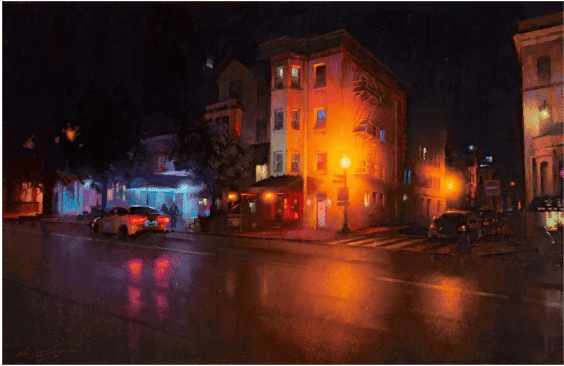
Gavin Glakas, Nights on P Street, oil on panel, 16” x 24.5”
Although our brains stop developing somewhere in our mid 20s, they go on changing as long as we live. The brain’s ability to physically change the more you do something is called plasticity. Neuroplasticity. It’s why practicing really does work. Why should digital art, drawing, sculpting, or painting be any different?
Why should you instantly be a master at something you’re never done before?? Muscle memory allows us to forge entirely new connections between the brain, eyes, and arms, wrists, and hands. The only way to develop the muscle memory you need to master your medium is by repetition – the now-famous, and debunked, 10,000 hours thing.<< https://www.bbc.com/future/article/20121114-gladwells-10000-hour-rule-myth
Psychology tells us that deliberate practice – the sort artists need to learn their craft – is different from observation, rote memorization, or repetition. Simply observing or even repeating a task will not by itself improve performance. Deliberate practice is needed, practice that is intentional, done with attention, rehearsal, and repetition. Doing the work develops a baseline of knowledge that can lead to ever more complex knowledge and skills. The best way to learn to make your art is to make your art.
The only way to go is to keep going.

